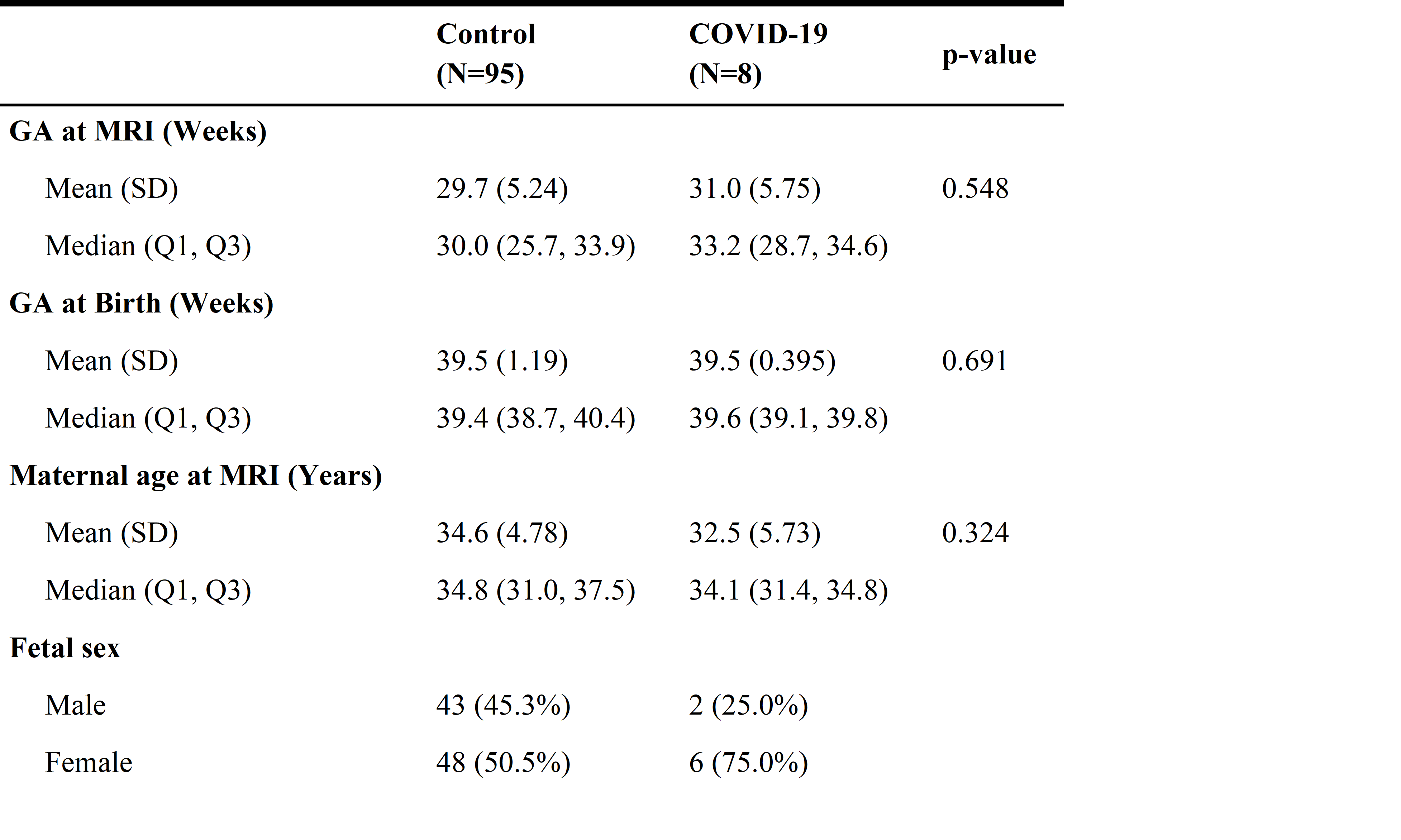Infectious Diseases
Infectious Diseases 5
440 - T2* Weighted Placental Magnetic Resonance Imaging in Pregnant Women Exposed to COVID-19 Infection
Publication Number: 440.419

Morteza Pishghadam (he/him/his)
Research Postdoctoral Fellow
childrens national hospital
Silver Spring, Maryland, United States
Presenting Author(s)
Background:
The impact of maternal coronavirus disease 2019 (COVID-19) infection on feto-placental development remains poorly understood. Early reports note increased rates of prematurity, stillbirth and low-birth weight related to COVID-19 infection, while ex vivo studies note increased rates of fetal and maternal vascular malperfusion and smaller placental weight in COVID-exposed pregnancies. However, mechanisms of COVID-19 exposure resulting in placental insufficiency and adverse outcomes remain poorly understood. T2* weighted magnetic resonance imaging (MRI) allows for quantitative measures of regional tissue oxygenation and direct in vivo assessments of placental function.
Objective:
To determine whether T2* weighted placental MRI can detect differences between pregnant women who were exposed to COVID-19 infection versus those not exposed during the pandemic.
Design/Methods:
The study prospectively enrolled eligible pregnant women with singleton gestations between June 2020-Dec. 2021 Pregnant women underwent a placental MRI up to two timepoints in gestation. A 3D multi-echo gradient echo (ME-GRE) sequence was performed. For reference anatomical imaging, T2-weighted imaging was acquired on the same slices. From ME-GRE data the placenta was manually segmented. The T2* was calculated by using voxel-wise fitting of a monoexponential function. Multiple linear regression was used to test for the difference in log10(T2*) adjusting for sex, gestational age at MRI, maternal age, and gestational age at birth.
Results:
A total of 79 pregnant women were successfully enrolled and underwent a total of 103 fetal MRI studies at a mean gestational age of 30.35 weeks (Table 1). Of these, 8 women had documented COVID-19 infection in pregnancy prior to fetal MRI. The mean log10(T2*) value in COVID-19 group was significantly lower compared to those without infection (3.9231 ± 1.42 vs. 4.7968 ± 1.08, p-value=0.02), after adjusting for relevant clinical covariates. There were no differences in gestational age in those newborns exposed to the COVID-19 infection in-utero versus those that were not.
Conclusion(s):
We report that pregnant women with documented COVID-19 infection had lower placental T2* values compared to pregnant women without known COVID-19 infection. This may represent secondary placental dysfunction that results from maternal COVID-19 infection; the significance of these findings, however, on feto-maternal outcomes is unknown but currently under investigation.

